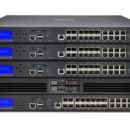New Cybersecurity Threat Predictions for 2021

In 2020, we saw many rapid changes on a global scale as organizations across the world attempted to adapt to a new normal caused by the pandemic. Amid this shift, there were significant developments seen across the cyberthreat landscape. Going into 2021 and beyond, we face another significant shift with the rise of new intelligent edges, which is about more than just end-users and devices remotely connecting to the network.
In FortiGuard Labs’ threat predictions for 2021, we’ve estimated the strategies that we anticipate cybercriminals will leverage in the coming year and beyond. This includes, but is not limited to, predictions and insights on intelligent edge computing, 5G-enabled devices, and advances in computing power, as well as the new wave of advanced threats that will undoubtedly arise as a result.
Each year at this time, we take a look at trends across the cyberthreat landscape, whether just around the corner or further afield. Predicting security threat trends may seem like more art than science, but the reality is that combining a strong understanding of how threats develop and what sorts of technologies cybercriminals gravitate toward (both to use and to exploit) with evolving business trends and strategies helps make predictions a reasonable process.
Over the past several years, this annual predictions report has touched on such issues as the evolution of ransomware, the risks of an expanding digital business footprint, and the targeting of converged technologies—especially those that are part of smart systems such as smart buildings, cities, and critical infrastructures. It has also considered the evolution of morphic malware, the grave potential of swarmbased attacks, and the weaponization of artificial intelligence (AI) and machine learning (ML). Some of those have already come to pass, and others are well on their way.
The Intelligent Edge is a Target
Over the past few years, the traditional network perimeter has been replaced with multiple edge environments, WAN, multi-cloud, data center, remote worker, IoT, and more, each with its unique risks. One of the most significant advantages to cybercriminals in all of this is that while all of these edges are interconnected many organizations have sacrificed centralized visibility and unified control in favor of performance and digital transformation. As a result, cyber adversaries are looking to evolve their attacks by targeting these environments and will look to harness the speed and scale possibilities 5G will enable.
Trojans Evolve to Target the Edge
While end-users and their home resources are already targets for cybercriminals, sophisticated attackers will use these as a springboard into other things going forward. Corporate network attacks launched from a remote worker’s home network, especially when usage trends are clearly understood, can be carefully coordinated so they do not raise suspicions. Eventually, advanced malware could also discover even more valuable data and trends using new EATs (Edge Access Trojans) and perform invasive activities such as intercept requests off the local network to compromise additional systems or inject additional attack commands.
5G Can Enable Advanced Swarm-Attacks
Compromising and leveraging new 5G-enabled devices will open up opportunities for more advanced threats. There is progress being made by cybercriminals toward developing and deploying swarm-based attacks. These attacks leverage hijacked devices divided into subgroups, each with specialized skills. They target networks or devices as an integrated system and share intelligence in real time to refine their attack as it is happening. Swarm technologies require large amounts of processing power to enable individual swarmbots and to efficiently share information in a bot swarm. This enables them to rapidly discover, share, and correlate vulnerabilities, and then shift their attack methods to better exploit what they discover.
Advancements in Social Engineering Attacks
Smart devices or other home-based systems that interact with users, will no longer simply be targets for attacks, but will also be conduits for deeper attacks. Leveraging important contextual information about users including daily routines, habits, or financial information could make social engineering-based attacks more successful. Smarter attacks could lead to much more than turning off security systems, disabling cameras, or hijacking smart appliances, it could enable the ransoming and extortion of additional data or stealth credential attacks.
New Ways to Leverage Ransomware in Critical Infrastructures
Ransomware continues to evolve, and as IT systems increasingly converge with operational technology (OT) systems, particularly critical infrastructure, there will be even more data, devices, and unfortunately, lives at risk. Extortion, defamation, and defacement are all tools of the ransomware trade already. Going forward, human lives will be at risk when field devices and sensors at the OT edge, which include critical infrastructures, increasingly become targets of cybercriminals in the field.
Innovations in Computing Performance Will Also Be Targeted
Other types of attacks that target developments in computing performance and innovation in connectivity specifically for cybercriminal gain are also on the horizon. These attacks will enable adversaries to cover new territory and will challenge defenders to get ahead of the cybercriminal curve.
Advances in Cryptomining
Processing power is important if cybercriminals want to scale future attacks with ML and AI capabilities. Eventually, by compromising edge devices for their processing power, cybercriminals would be able to process massive amounts of data and learn more about how and when edge devices are used. It could also enable cryptomining to be more effective. Infected PCs being hijacked for their compute resources are often identified since CPU usage directly impacts the end-user’s workstation experience. Compromising secondary devices could be much less noticeable.
Spreading Attacks from Space
The connectivity of satellite systems and overall telecommunications could be an attractive target for cybercriminals. As new communication systems scale and begin to rely more on a network of satellite-based systems, cybercriminals could target this convergence and follow in pursuit. As a result, compromising satellite base stations and then spreading that malware through satellite-based networks could give attackers the ability to potentially target millions of connected users at scale or inflict DDoS attacks that could impede vital communications.
The Quantum Computing Threat
From a cybersecurity perspective, quantum computing could create a new risk when it eventually is capable of challenging the effectiveness of encryption in the future. The enormous compute power of quantum computers could render some asymmetric encryption algorithms solvable. As a result, organizations will need to prepare to shift to quantum-resistant crypto algorithms by using the principle of crypto agility, to ensure the protection of current and future information. Although the average cybercriminal does not have access to quantum computers, some nation-states will, therefore the eventual threat will be realized if preparations are not made now to counter it by adopting crypto agility.
Artificial Intelligence Will Be Key
As these forward-looking attack trends gradually become reality, it will only be a matter of time before enabling resources are commoditized and available as a darknet service or as part of open-source toolkits. Therefore, it will take a careful combination of technology, people, training, and partnerships to secure against these types of attacks coming from cyber adversaries in the future.
AI Technology Needs to Keep Up
The evolution of AI is critical for future defense against evolving attacks. AI will need to evolve to the next generation. This will include leveraging local learning nodes powered by ML as part of an integrated system similar to the human nervous system. AI-enhanced technologies that can see, anticipate, and counter attacks will need to become reality in the future because cyberattacks of the future will occur in microseconds. The primary role of humans will be to ensure that security systems have been fed enough intelligence to not only actively counter attacks but actually anticipate attacks so that they can be avoided.
Organizations Can’t Do It Alone
Organizations cannot be expected to defend against cyber adversaries on their own. They will need to know who to inform in the case of an attack so that the “fingerprints” can be properly shared and law enforcement can do its work. Cybersecurity vendors, threat research organizations, and other industry groups need to partner with each other for information sharing, but also with law enforcement to help dismantle adversarial infrastructures to prevent future attacks. Cybercriminals face no borders online, so the fight against cybercrime needs to go beyond borders as well. Only by working together will we turn the tide against cybercriminals.
Enabling Blue Teams
Threat actor tactics, techniques, and procedures (TTPs), researched by threat intelligence teams, such as threat actor playbooks, can be fed to AI systems to enable the detection of attack patterns. Similarly, as organizations light up heatmaps of currently active threats, intelligent systems will be able to proactively obfuscate network targets and place attractive decoys along attack paths. Eventually, organizations could respond to any counterintelligence efforts before they happen, enabling blue teams to maintain a position of superior control. This sort of training gives security team members the ability to improve their skills while locking down the network.
Read more about the FortiGuard Labs Threat Predictions for 2021 and beyond. Access the full report.












Dell Software Group sold to help fund looming EMC deal
Ingram Micro gets distribution access to Dell’s security range in Australia